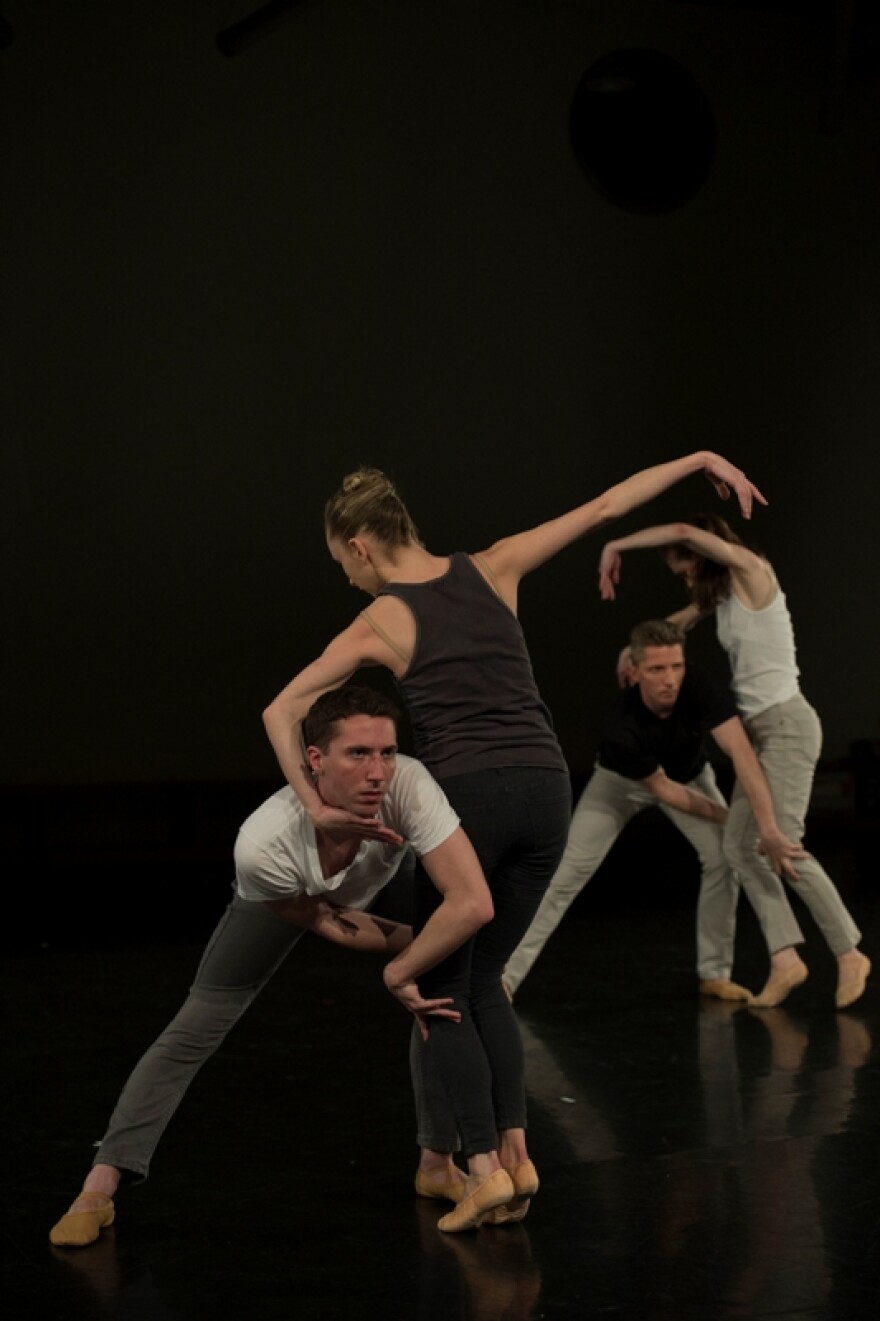At the opening night of this year’s Choreographers' Showcase, Robert Curran, producing and artistic director of the Louisville Ballet, framed the evening in the context of narrative. In a season in which the Ballet is producing three of the great story ballets of all time (Swan Lake, Sleeping Beauty, The Nutcracker), to invite company choreographers to create a narrative ballet brings even more cohesiveness to this season.
In addition to three company choreographers (Roger Creel, Justin Michael Hogan and Sanjay Saverimuttu) Curran also invited back Ben Needham-Wood, a former company member, who contributed choreography to several showcases during his time with the Ballet.
The heart of the evening belonged to the two pieces on either side of the intermission. Hogan and Saverimuttu have created two powerful, compelling ballets which I hope we get to experience again as they continue to develop them.
“The Heart of Light, The Silence” by Hogan incorporated readings of T.S. Eliot’s “The Wasteland” (recorded by Jon Patrick O’Brien and Dara Jade Tiller) as well as music by Keaton Henson and Ren Ford. Exploring issues of life challenges and choices, the ensemble clearly resonated with the personal stories on which the ballet was based. Dressed casually in today’s ‘uniform’ of jeans and T’s, the dancers embodied the turmoil and tenderness of the quotidian and the life-changing.
I had last seen Hogan’s choreography in “A View, A Memory, A Choice” in an earlier Showcase. As at that time, his choreography is at ease with constantly shifting pairs and groupings, which serve to underscore his abstract narrative threads. There are several false endings in this piece which, if Hogan continues to develop this, can be streamlined; in particular the variation with the whole ensemble reiterating their iconic gestures is one that would be more powerful with editing.
The sextet with Lexa Daniels, Jordan Martin, Ashley Thursby, Mark Krieger, Rob Morrow, and Kristopher Wotjera was especially powerful. The power of this piece was exemplified by audience silence as it ended, before the applause began.
Saverimuttu’s “Sunrise,” inspired by his own parents’ immigration story, is a timely reminder that our country is built on generations of immigrants. Krieger and Natalia Ashikhmina as the central couple were particularly powerful and connected. Saverimuttu gives them some beautiful partnering opportunities, with subtle shifts of arm and hand placements that shift their bodily relationship with neither of them appearing to have moved to accomplish that shift.
The introduction of the ensemble in black robes, over their neutral pastel gowns of the early scenes, serves to create both atmospheric darkness and danger as well as a more naturalistic suggestion of individuals in power who can deny an immigrant’s request. The mirroring of Krieger and Ashikhmina with two other couples suggests both the universality of their story, as well as the psychological toll such a journey takes on family, with nightmares and second-guessing choices. In this iteration of an immigrant story, the ending was one of hope and affirmation.
In these two ballets the responsibility and honor the dancers had of telling others’ stories was palpable throughout their performances.
Creel’s “Know,” an exploration of how we choose our lovers, was a cool and less personal approach to his theme. Working with an ensemble of 13 dancers, at times the performance space felt cluttered and confused in a swirl of flowing arm movements as dancers continuously created new groupings and patterns. The most lyrical divertissement of this piece was the quartet towards the end with Shelby Shenkman, Natalie Nguyen, Ryan Stokes and John Aaron Brewer, which was clean and elegant.
Closing the evening was Ben Needham-Woods’ “Run For The Roses” a series of vignettes inspired both by Louisville’s iconic horse race and by interviews with two of the dancers (Emily Reinking O’Dell and Ryan Stokes.) Elements of this piece had been created last summer, and at this performance it felt like those original elements and the Louisville Ballet-specific elements had not yet gelled.
The section danced by the full ensemble to a jazzy Derby music piece was delightful and echoed some of the lightness and fun seen in Needham-Woods’ earlier “Ants in the Pants.” The extended sections danced to the voices of O’Dell and Stokes could be edited to better serve their point that dedication, discipline and passion are at the heart of the arts. As a closing piece of the evening, the jig-saw like nature of the piece diminished the more holistic narratives of the three other works on the program.
Nevertheless, there was much dedication, discipline and passion in the evening’s choreography and performances. And a showcase in which a smaller number of choreographers have the opportunity to create a short one act ballet is a vehicle that can only strengthen and deepen the next generation of choreographers.
Featured image: Natalia Ashikhmina and Mark Krieger in "Sunrise"






